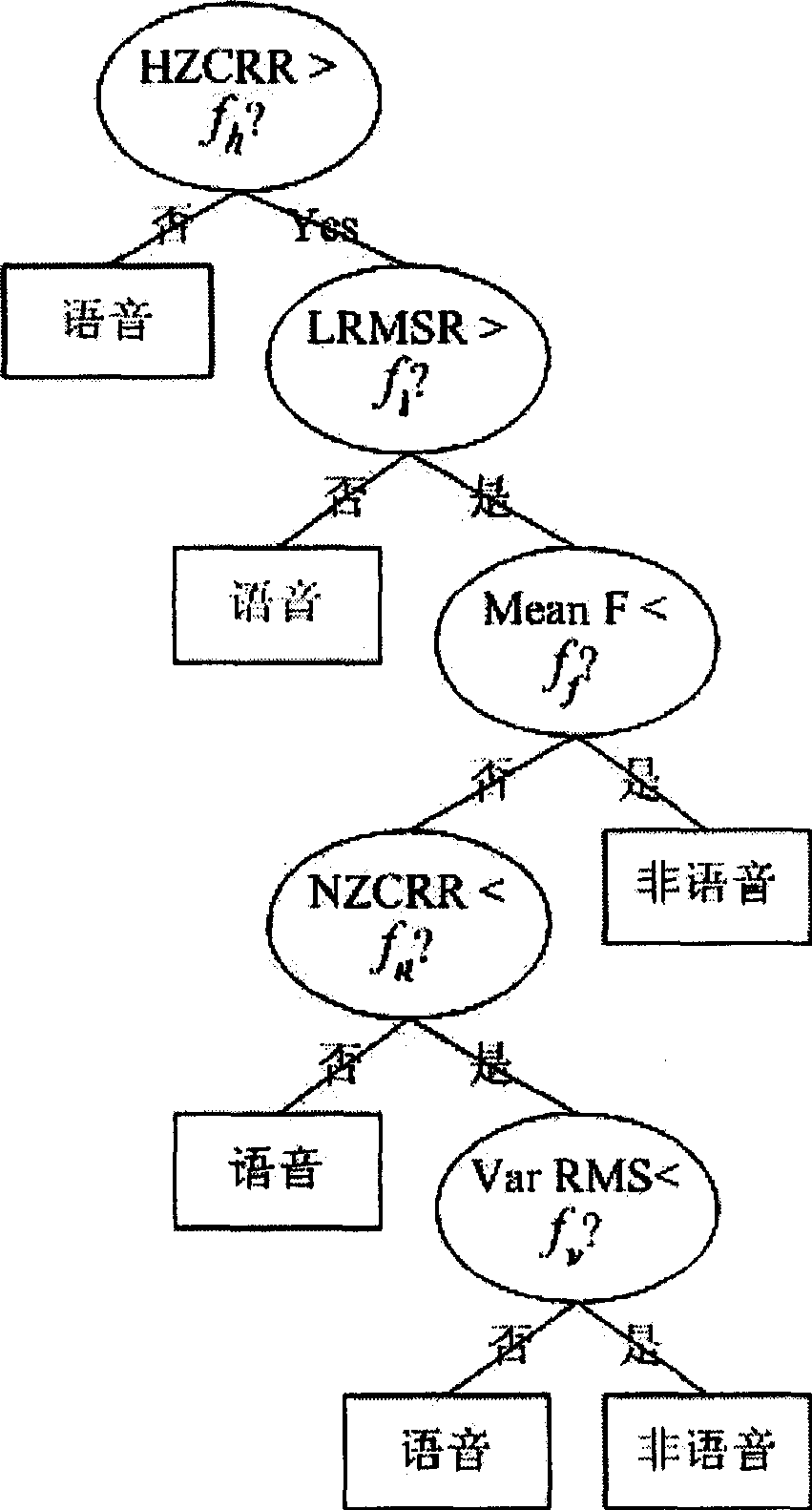Audio frequency splitting method for changing detection based on decision tree and speaking person
A technology that changes the detection and speaker. It is applied in speech analysis, speech recognition, instruments, etc. It can solve problems such as unreliable distance values, and achieve the effect of saving calculation time and improving accuracy.
- Summary
- Abstract
- Description
- Claims
- Application Information
AI Technical Summary
Problems solved by technology
Method used
Image
Examples
Embodiment Construction
[0011] The present invention will be further introduced below in conjunction with accompanying drawing and embodiment: this audio segmentation method based on decision tree and speaker change detection is divided into six steps altogether:
[0012] Step 1: Audio Preprocessing
[0013] Audio preprocessing is divided into three parts: sampling quantization, zero drift removal, pre-emphasis and windowing.
[0014] 1. Sampling and quantization
[0015] A), filter the audio signal with a sharp cut-off filter to make its Nyquist frequency F N 4KHZ;
[0016] B), set the audio sampling rate F=2F N ;
[0017] C), for audio signal S a (t) Sampling by period to obtain the amplitude sequence of the digital audio signal s ( n ) = s a ( n F ) ;
[0018] D), s(n) is quantized and coded by ...
PUM
 Login to View More
Login to View More Abstract
Description
Claims
Application Information
 Login to View More
Login to View More - R&D
- Intellectual Property
- Life Sciences
- Materials
- Tech Scout
- Unparalleled Data Quality
- Higher Quality Content
- 60% Fewer Hallucinations
Browse by: Latest US Patents, China's latest patents, Technical Efficacy Thesaurus, Application Domain, Technology Topic, Popular Technical Reports.
© 2025 PatSnap. All rights reserved.Legal|Privacy policy|Modern Slavery Act Transparency Statement|Sitemap|About US| Contact US: help@patsnap.com



